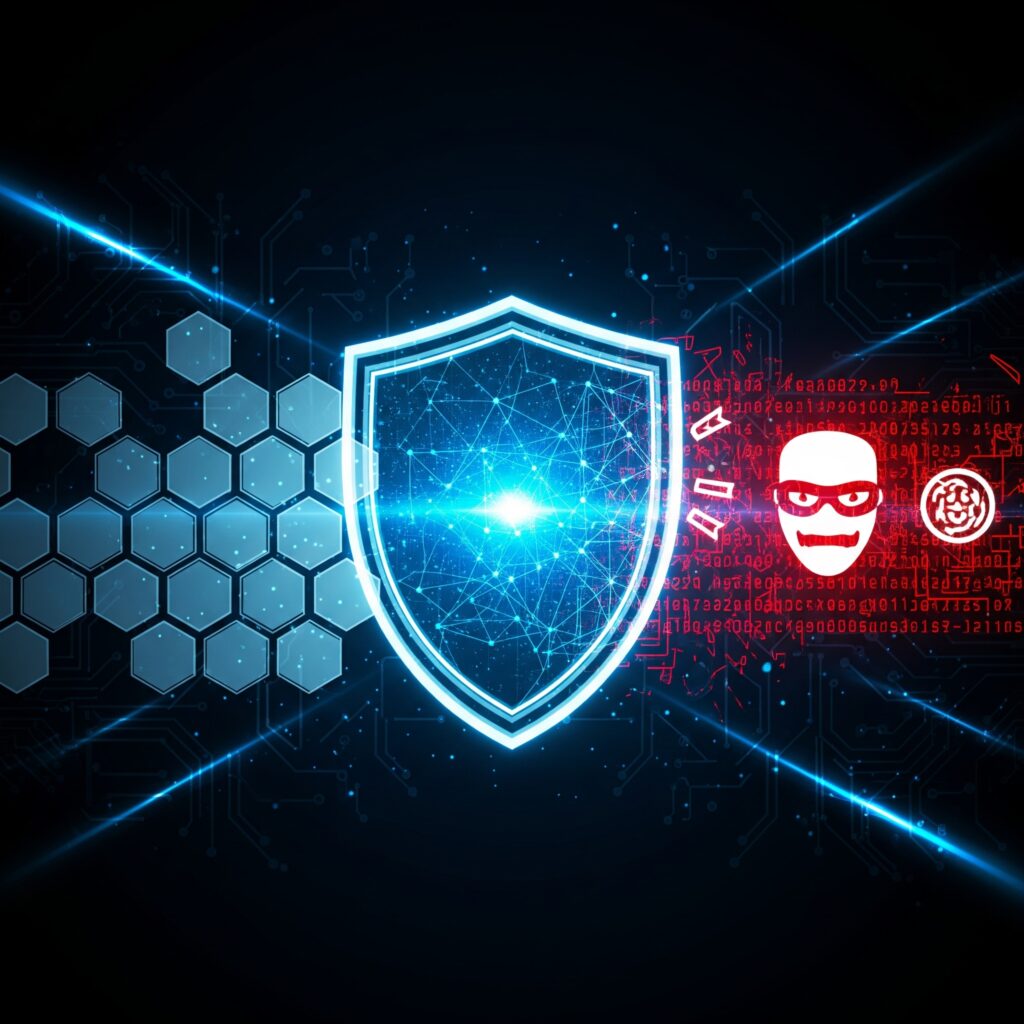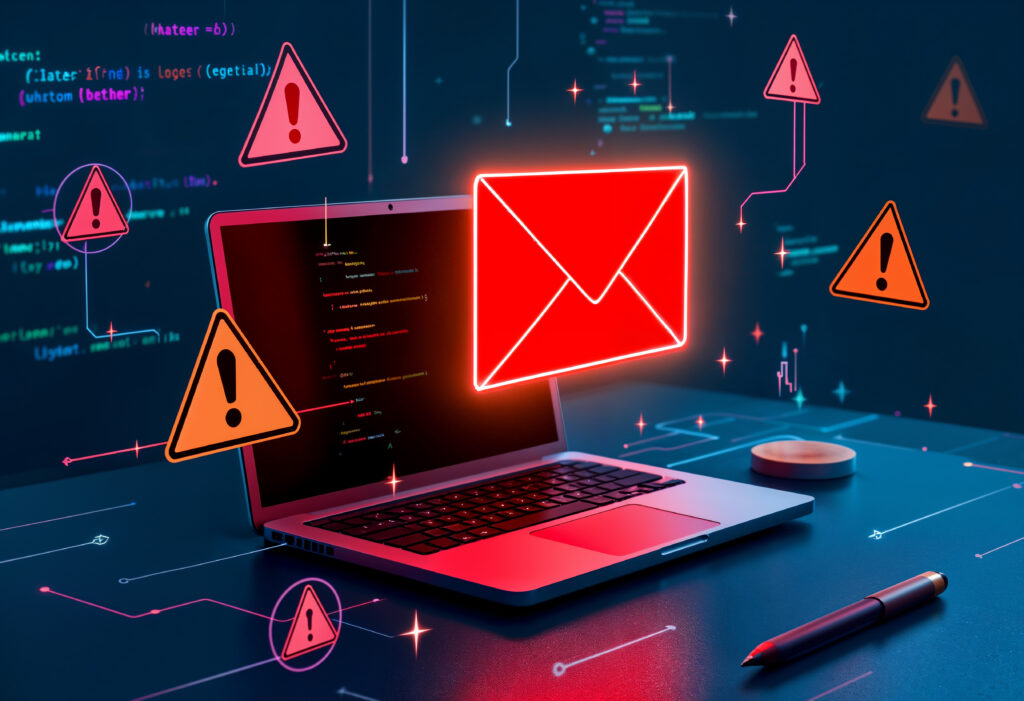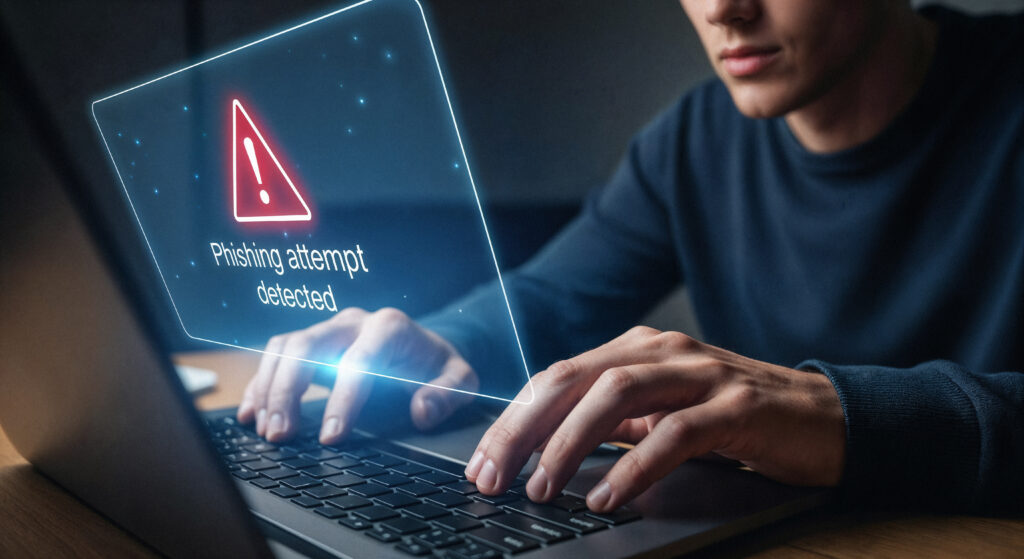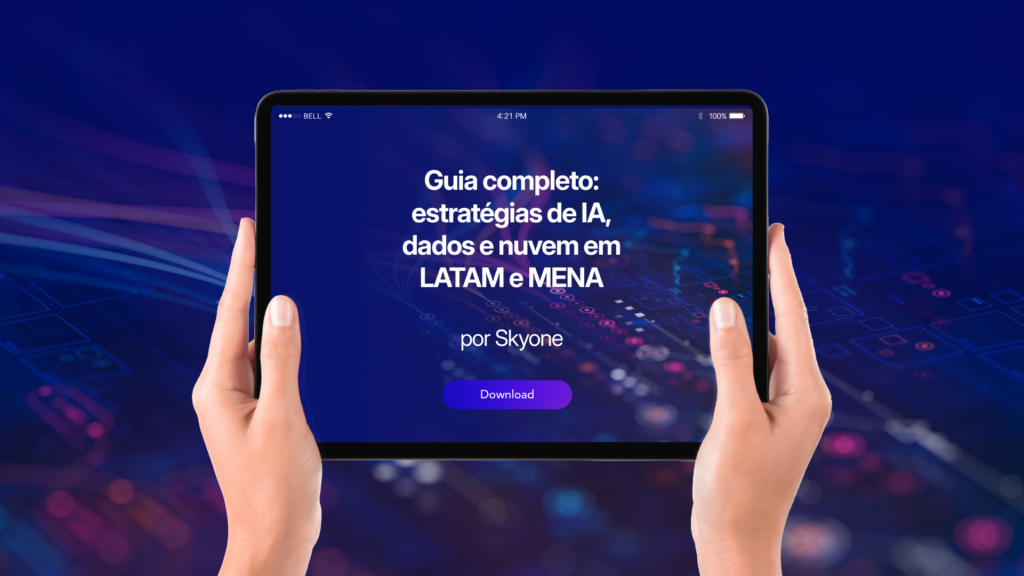Have you ever stopped to think about how much personal information you have online? From your CPF (Brazilian Social Security number) to your purchase history, your address to your credit card number, all of this forms our "digital identity." Now, imagine losing control over that data . Scary, right?
We live in a digital age where data security is more important than ever. With cyberattacks growing in frequency and sophistication, protecting your personal and business information is crucial. Protecting yourself in the digital world is not just a choice, but a vital necessity. After all, as technologies evolve, so do hackers' methods, making data protection an ever-changing field.
What is a data breach?
A data breach occurs when confidential information is accessed or disclosed without authorization. Think of it as a burglar breaking into your digital home. This can include personal, financial, or corporate data . The most shocking thing is that these breaches can come from anywhere, from orchestrated hacker attacks to simple human error that ends up exposing sensitive information.
Read also: Hacker attack: understand the risks and how to protect yourself
Examples of data breaches
Just turn on the news and you'll see that no one is safe. Renowned companies have faced system breaches, resulting in the exposure of millions of users' personal information.
In 2019, Netshoes suffered a breach that exposed the data of approximately 2 million customers. In 2021, a hacker attack on Serasa Experian compromised the information of more than 220 million Brazilians, including sensitive data such as CPF (Individual Taxpayer Registry), salary, and credit score. In 2023, the Fleury group was also the target of a ransomware attack that impacted its operations.
These incidents illustrate the vulnerability of any organization, regardless of size or industry. If large corporations can be hacked, imagine what can happen to your data if you don't take the necessary precautions.
The consequences of a data breach
A data breach can turn a person's or company's life upside down. The consequences can be devastating, resulting in financial losses, reputational damage, and legal commitments. Companies can face severe fines and lawsuits, while individuals can experience identity theft and financial fraud. Recovering from a breach can be long and costly, both financially and in terms of consumer trust.
The importance of cybersecurity
The role of cybersecurity in our society
Cybersecurity refers to practices and technologies that protect systems, networks, and data from digital attacks . In today's world, it's like a vaccine: essential to protect us from invisible threats . That's why, in an increasingly digital world, cybersecurity has become a priority for individuals and organizations. Protecting data just a matter of security, but also of privacy and user rights.
The evolution of cyber threats
The digital war is constant. With the growing reliance on digital solutions, investing in cybersecurity is essential to prevent cyberattacks . Cyberthreats are constantly evolving, with hackers developing new methods to bypass existing defenses. This requires that security measures also constantly evolve.
Benefits of investing in cybersecurity
Investing in cybersecurity offers several benefits. In addition to protecting sensitive information, a robust security strategy can increase customer trust and improve brand reputation. Well-protected companies are seen as more trustworthy and responsible, which can be a competitive advantage in the market.

6 essential tips to protect your data
It's time to take action. How about starting with small changes to ensure your digital security ?
1. Use strong and unique passwords
Your password is the gateway to your digital life. Don't leave it exposed. Create strong , complex passwords, combining uppercase and lowercase letters, numbers, and symbols. Passwords should be long and unpredictable, avoiding obvious sequences or easily accessible personal information.
No more using "123456" or your date of birth. Avoid using the same password across multiple accounts. Consider using a password manager to store and generate secure passwords. This helps ensure each account has a unique password without having to memorize them all.
Change your passwords regularly to minimize the risk of compromise. The ideal frequency may vary, but a good practice is to change them every few months. Notifications of suspicious login attempts should be treated as a priority, and passwords should be changed immediately.
2. Keep your software up to date
Updates aren't just about bringing new features. They ensure you have the latest security fixes. Outdated Software is an easy target for hackers, who exploit known vulnerabilities. Updates fix these flaws and improve overall system security.
Enable automatic updates. This ensures you don't miss important updates and reduces your risk of exposure to threats. Automating this process is a simple way to keep your systems protected.
Perform a "digital cleanup" every now and then. Review the software installed on your devices. Remove unnecessary or unused apps, as they can also pose a security risk. Less software means fewer entry points for potential attacks .
3. Use two-factor authentication (2FA)
This is your "two-factor lock." Two-factor authentication adds an extra layer of security by requiring two forms of verification before accessing an account. This could include a code sent to your phone or a fingerprint. Even if someone discovers your password, they won't be able to access your account without this second form of authentication.
Enable 2FA on all accounts that offer it. This is especially important for accounts that contain sensitive or financial information.
2FA significantly reduces the risk of unauthorized access, making your accounts much more secure. With this additional layer, hacking attempts become less likely to succeed. It's a simple yet powerful measure to protect your information .
4. Be aware of phishing
Phishing is a treacherous technique, a veritable "digital fishing." Be wary of suspicious emails or messages asking for personal or financial information Phishing emails may appear legitimate, but they often contain malicious links or attachments.
For businesses, solutions like Skyone's Phishing Test simulate real attacks to raise user awareness and reduce risk. These simulations help train employees to identify phishing attempts, reducing the chance of human error, which is the main gateway to attacks.
Always be suspicious. Verify authenticity before providing any information. Be wary of messages that create a sense of urgency or threaten consequences if you don't respond immediately. Contact the company or institution directly to confirm the legitimacy of the request.
5. Back up your data regularly
Have you ever thought about losing all your files, photos, and documents overnight? Regularly backing up your data ensures you have secure copies in the event of a cyberattack cloud storage solutions or physical storage devices to keep your data safe.
Establish a routine for your backups . Depending on the amount of data, you may need to perform daily, weekly, or monthly backups. Most importantly, periodically verify the integrity of your backups to ensure they can be restored when needed.
And last but not least: protect your backup ! Use encryption to protect your stored data. This adds an extra layer of security, ensuring that even if your backups are compromised, the data remains inaccessible.
6. Install reliable security software
Think of an antivirus and a firewall as the security guards for your digital home. security software can detect and neutralize threats before they cause damage. When choosing software , look for independent reviews and features like real-time protection and automatic updates.
For more robust protection, companies can rely on solutions like Skyone:
- Threat analysis : identifies vulnerabilities and guides prevention actions.
- WAF (Web Application Firewall) : Protects web applications from attacks and exploits.
- Network firewall : protects your network traffic from malicious and unauthorized access.
- SOC/SIEM : centralizes 24×7 security incident monitoring and response.
- EDR (Endpoint Detection and Response) : Monitors and responds to threats directly on devices.
Keep your security software up to date to ensure maximum effectiveness. Updates include new virus definitions and security improvements that are crucial for continued protection .
Combine your security software with safe browsing practices. Avoid suspicious websites and be cautious when downloading files from the internet. Remember that security software comprehensive security .
In a corporate environment , these security features cannot be treated as optional extras. When purchasing any technology or digital service, demand that features such as a firewall , real-time protection , threat analysis , and incident response be included as standard.
If the solution doesn't offer this level of protection, consider it a red flag . Information security isn't an extra; it's a prerequisite. This careful consideration should guide all of the company's technological decisions, as we'll see below.
Data protection in corporate environments
For companies, digital security is a shared responsibility. The following tips are essential and can be implemented with the support of specialized solutions that we at Skyone have selected.
Educate your employees
The weakest link in any security system is often the human being. Education is one of the best defenses against cyberattacks . Informed employees are less likely to make mistakes that can lead to data breaches . Regular training creates a culture of security within the organization.
With Skyone's Phishing Test , simulated real attacks allow companies to assess user vulnerabilities and reinforce their security culture. Detailed reports help identify which areas, teams, or individuals are most vulnerable and where additional training is needed.

Provide regular training on security practices and how to identify potential threats. Use real-world examples and simulated scenarios to make learning more relevant and engaging.
Restrict access to sensitive information
The principle here is "minimum necessary." Implement access controls to ensure that only authorized individuals can access sensitive information . Use the principle of least privilege, where employees have only the permissions necessary to perform their jobs.
Regularly monitor who has access to sensitive information and adjust permissions as needed. This may include reviewing access after role changes or employee departures.
Restricting access minimizes the risk of accidental or malicious leaks. It also facilitates auditing and tracking who accessed specific information.
Monitor suspicious activity
Use monitoring tools to detect suspicious activity on your networks. security can identify anomalous behavior patterns that may indicate a breach . These tools provide real-time alerts, enabling rapid response.
Skyone's tools, such as SOC/SIEM and EDR , centralize monitoring and provide advanced threat detection and response capabilities. Additionally, Threat Analysis helps validate security defenses and controls by assessing the company's attack surface. This allows you to receive prioritized alerts based on the risk score.
Have an emergency plan. Establish an incident response plan to deal with detected threats. This plan should include clear procedures for identifying, containing, and remediating threats.
Conclusion
Protecting against data breaches requires a proactive and ongoing approach. By implementing these cybersecurity , you can significantly reduce the risk of cyberattacks . Remember, your data security starts with you. Staying vigilant and up-to-date on security is essential to protecting your information in the ever-evolving digital world.
For companies, however, this vigilance translates into an act of responsibility, leadership, and vision. Investing in cybersecurity is the foundation of trust, governance, and success. Security layers like those offered by Skyone allow companies to not only mitigate risks but also consolidate their role as a market leader, ensuring stability, sustainable growth, and security for all their stakeholders.
Ultimately, the best defense is prevention , and the best prevention is a comprehensive security strategy .
Author
-

Raquel is a marketing director with 15 years of experience in high growth B2B companies. It works in the development of integrated demand generation strategies, ABM, content and brand positioning, with expansion focus and acceleration of results. Throughout his career, led teams, boosted releases, and supported the entry into new markets. He believes marketing goes far beyond numbers, is about connecting people, solving problems and accelerating success stories.




